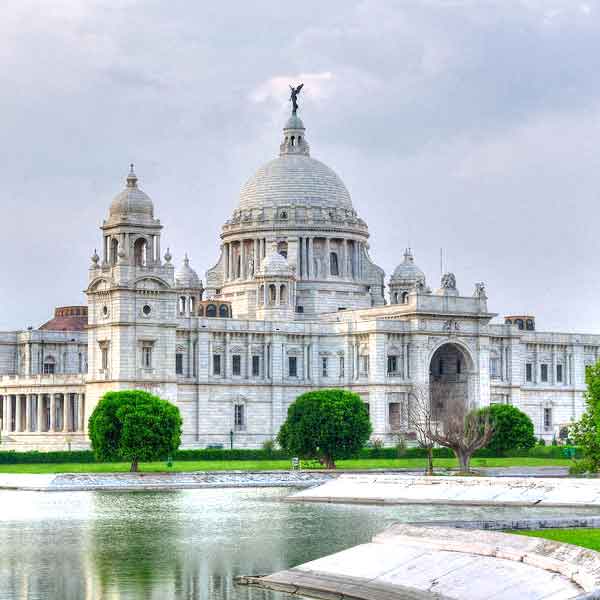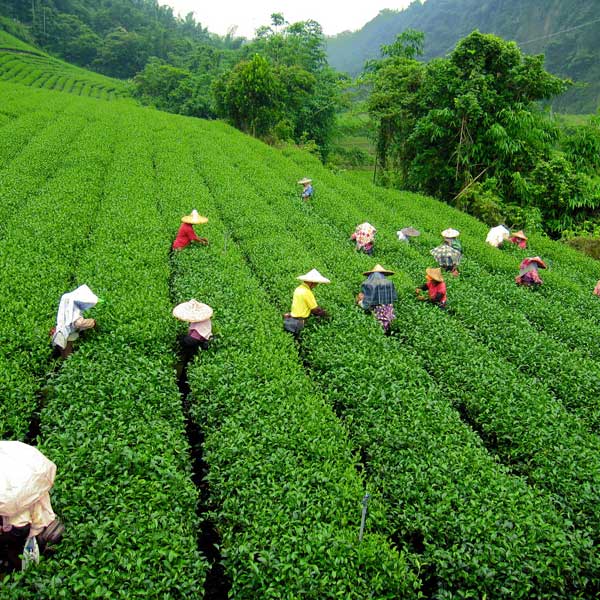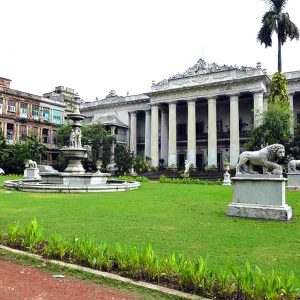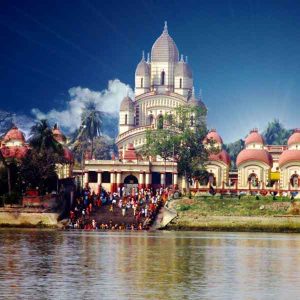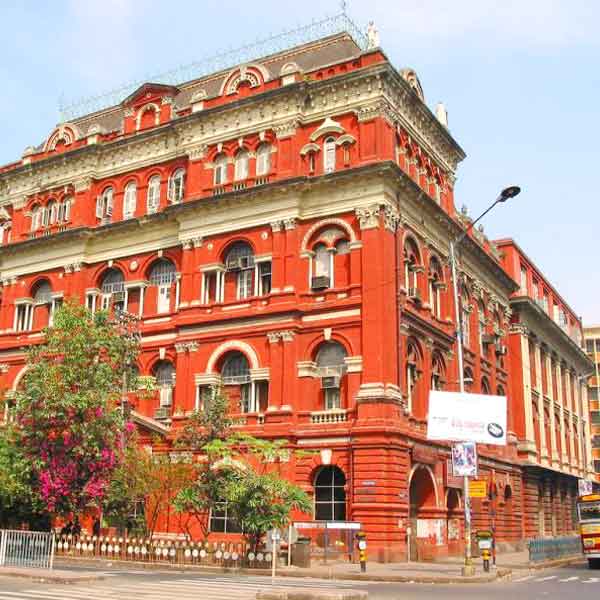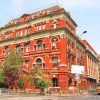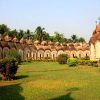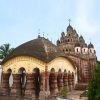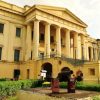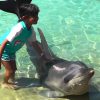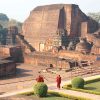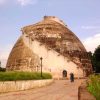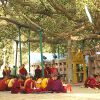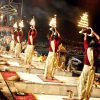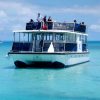Day 01: Arrive in Kolkata (Calcutta).
On arrival in Kolkata we will be escorted to the hotel. Rest of the day at leisure. Overnight in Kolkata.
Day 02: Kolkata to Chandernagore.
The morning tour will take us to the Colonial parts of Kolkata; we will drive a section of the Heritage Buildings of Kolkata covering Writers’ Building, The General Post Office, The High court, The Raj Bhawan, The Town Hall, Council House, Treasury Building and The Reserve Bank of India. Also visit the Dalhousie Square and the drive past St. John’s Church. Lunch at a local restaurant. In the afternoon drive to Bandel to board the Ship en route visiting Chandernagore.
Chandernagore was established as a French colony in 1673, when the French obtained permission from Ibrahim Khan, the Nawab of Bengal, to establish a trading post on the bank of the Hooghly River. Bengal was then a province of the Mughal Empire, and it became a permanent French settlement in 1688. On arrival at the former French colony, we will walk through French Colonial buildings and along the promenade, passing the former French Governor’s residence now converted into a museum, (we will visit if open), the church and the old bakery. Some of the other buildings have now been converted into college and schools. The Imambara is one of the famous Shiya pilgrimage centre in West Bengal. The building was started in the year 1841 by Haji Mohammad Mahasin & was completed in the year 1861. The two storied building consisting of ranged rooms having a wide entrance of main gate flanked by two giant towers. The gravelly gong of the Victorian-era clock, the winding key of which reportedly weighs 20kg, breaks the reverie. Eighty-five large chandeliers, including Persian ones, and 165 smaller lamps light up the Imambara?s gorgeous halls and passages every Muharram, when pilgrims descend on the famous Shia pilgrimage site. Today it houses Hamza-e-Ilmia, Higher Religious Education Centre.
We drive to the landing site and take a local boat to approach and board the Bengal Pandaw and sail. Overnight on board the Ship.
Day 03: Arrive at Kalna.
After breakfast arrive at Kalna. Here we ride Rickshaws to visit the enchanting Rajbari complex that has the maximum concentration of temples. The complex contains a unique mixture of Bengal?s temple architecture. On one side of the road lies the Nabakailas Temples. Built in 1809 by the Bardhaman Maharaja, the complex contains 108 ‘aat – chala’ or “eight sloped roofed” Shiva temples arranged in two concentric circles. The outer circle consists of 74 temples of alternate black and white lingams while the 34 temples of the inner circle have only white lingams. Due to its ingenious planning all Shiva lingams can be seen from the centre of the temple.
On the other side of the road lies a walled complex, containing the most diversified form of Bengal’s temple architecture. The Pratapeshwar Temple, built in 1849 contains terra cotta plaques depicting themes of Hindu epics, mythical life of Sree Chaitanya, images of Durga and various aspects of day to day life. The other temples are the Lalji temple built in 1739, the oldest in the complex, Krishnachandra temple built in 1751 is similar to the Lalji temple. The complex also houses a flat roofed temple of Giri Govardhan.
Later we sail to Matiari en route passing the religious town of Mayapur, quintessentially a temple town known for being the headquarters of the Krishna Consciousness Movement “ISKON” and the birth place of Sri Chaitanya Mahaprabhu, born in 1486 AD and considered as an incarnation of Lord Krishna. The town is situated on the banks of the confluence of the Ganga and the Jalangi rivers. We arrive at Matiari by evening and moor for the night. Overnight on board the Ship.
Day 04: Matiari to Murshidabad.
Morning visit to Matiari, known for manufacturing handcrafted brass pots and various kinds of brass utensils. We will get to watch master craftsmen use traditional methods passed down from generations to manufacture these brass items. There is an opportunity to buy souvenirs.
Later we sail to Murshidabad and en-route sail past the battlefield of Plassey where in 1757 Robert Clive of British East India Company defeated the Mogul Nawabs, the then rulers of Bengal and their French Allies establishing the company rule in India which expanded over much of South Asia for the next 190 years. Arrive Murshidabad and moor overnight. Overnight on board the Ship.
Day 05: Murshidabad to Jangipur.
After breakfast we visit the Hazarduari Palace, built during the reign of Nawab Nazim Humayun Jah (1824 – 1838 AD) by an English architect, McLeod Duncan following the Greek “Doric” style. The palace has more than a thousand real and false doors in the vast corridors.
Inside the palace museum one can observe a wide collection of antiquities including various kinds of weapons, oil paintings of Dutch, French and Italian artists, marble statues, metal objects, porcelain and stucco statues, farmans, rare books, old maps, manuscripts, land revenue records, palanquin mostly belonging to eighteenth and nineteenth centuries. We will also visit the Katra mosque.
After Murshidabad we sail past the Temples of Baranagar to Jangipur. The Temple complex was built in 1714 – 1793 by Rani Bhabani, the landlord of Natore. The brick-built temples are considered to be amongst the best examples of Bengal Terra cotta art. Overnight on board the Ship.
Day 06: Jangipur to Farakka.
Morning visit the village of Akbarpur, where local weavers make cotton textile sheets as a cottage industry. Later we enter the Farakka feeder canal and anchor before the lock gate. Overnight on board the Ship.
Day 07: Farakka to Raj Mahal.
In the morning we enter the lock gate and through the connecting canal to the Ganges revealing vast Panoramas. We can see the Farakka barrage which regulates the Ganges water into Bangladesh and India. We sail past Raj Mahal, once known as Akbarnagar, founded by the Mogul Emperor Akbar as capital of Bengal in 1592. Shah Jahan, builder of the Taj Mahal, spent a part of his youth here. After arrival we walk around and explore ruins of palaces and the mosques, we also walk through the areas where China Clay is mined. Overnight on board the Ship.
Day 08: Raj Mahal to Bateshwarsthan.
Full day cruising; time permitting we will explore some of the local villages and towns situated near the banks of the Ganges. This area is rich in bird life. Large flocks of water birds including Common Cranes can be seen here. Overnight on board the Ship.
Day 09: Bateshwarsthan to Sultanganj.
In the morning we visit the Vikramshila University. Established by King Dharampala in late 8th or early 9th Century A.D. Vikramshila University was one of the two most important centres of Buddhist learning in India during the reign of the Pala dynasty along with Nalanda University. Vikramashila was one of the largest Buddhist universities having more than one hundred teachers and about one thousand students. Subjects like theology, philosophy, grammar, meta-physics and logic were taught here.
Later we cruise through the Vikramshila Gangetic Dolphin sanctuary, established for the protection and conservation of the Ganges River Dolphins. The area also supports a rich diversity of other wildlife, many of which are threatened with extinction. These species include the Indian smooth-coated Otter, several species of hard, and soft, shell turtles, and an astounding variety of migratory and resident migratory birds.
We sail past Sultanganj conspicuous for two great rocks of granite, one of which on the river bank is crowned by a mosque. The second and larger one is occupied by a temple of Ghaibinath Siva. During the rule of the Mauryas, Guptas and Palas many works of art and architecture were raised at Sultanganj. Excavation near Sultanpur has yielded ancient relics like stupas, seals, coins, terra cotta and Hindu and Buddha images. Many carvings can still be seen in the Sultanganj hills. Overnight on board the Ship.
Day 10: Sultanganj to Munger.
Munger has remnants of a Mogul fort, as well as an 18 century British Cemetery. Visit Bihar School of Yoga: Established in 1963 by Swami Niranjanananda Bihar School of Yoga in order to preserve and regenerate the total scope of yogic science by combining academic and scientific methodology with a spiritual vision. Later we set sail for Simaria. Overnight on board the Ship.
Day 11: Arrive at Simaria: Visit Nalanda and Rajgir.
Nalanda perhaps is the oldest seat of learning in India. It treasures a glorious past, rich spiritual herit-age and some extraordinary architectural ruins believed to be established in 5th century by the Gupta Kings. Thereafter we visit Rajgir, the first capital of the Magadha Empire. Buddha not only spent many years in Rajgir, but also delivered important sermons here. Overnight on board the Ship.
Day 12: Simaria to Patna.
In Patna we will visit the monumental Golghar “Grain Silo” built by Captain John Garstin as a granary for the British army in 1786, after the famine of 1770. The structure is 29 meters high and the walls are 3.6 metres wide at the base. The winding stairway around the Golghar, offers a brilliant view of the city and the Ganges flowing by. Thereafter visit the Patna Museum.
The Patna Museum contains remarkable treasures like the First World War cannon, metal and stone sculptures of the Mauryan and Gupta periods, Buddhist sculptures and quaint terra cotta figures. A 16 metres long fossilized tree is one of its special features. Overnight on board the Ship.
Day 13: Patna to Varanasi via Bodh Gaya.
We have an early start for Varanasi en-route visiting Bodhgaya, one of the most important and sacred Buddhist pilgrimage centre for the Buddhists. It was here, under a banyan tree, “the Bodhi Tree” Gautama attained supreme knowledge to become “Buddha”, the Enlightened One. We continue to Varanasi, upon arrival check in at the hotel. Overnight at the Hotel.
Day 14: Varanasi.
After breakfast – Visit the ruins and Museum at Sarnath. The city is famous as the seat where Lord Buddha gave his first sermon after attaining enlightenment in Bodh Gaya. Archeological Museum of Sarnath contains a large collection of sculptures that stand testimony to the fervent artistic and religious activity for more than a thousand years. Evening we visit the Ghats to view the Aarti on the Ganges. Overnight in Varanasi.
Day 15: Depart to Onward Destination.
After breakfast, transfer to airport for your flight (indirect) to your onward destination.
A downstream option (Varanasi to Kolkata) is also available.
Please note that the itinerary outlined above is strictly subject to river conditions and daylight hours, which change continually. It offers our planned programme of excursions. However, adverse conditions or weather or other local considerations may necessitate some re-ordering of the programme during the course of the cruise. Any such changes will always be done to maximise the best use of time and weather conditions available. Guests willing to undertake this tour are advised to check with us the precise dates on which this journey can be undertaken.
RV BENGAL PANDAW
Formerly Pandaw IV and built in Myanmar in 2004, this delightful ship has 28 outside staterooms (each 170 square feet) over two decks. All rooms are air-conditioned with individual controls and have fitted windows with insect screens. There is also a mini-safe in each room. The bathrooms, for a ship of this size, are roomy with granite basin tops. Executive chefs have evolved a fusion cuisine combining the best of Asian andWestern traditions onboard.Where possible, produce is sourced locally and there will be a choice of Indian, European or vegetarian. Fine dining, excellent service and a hospitable caring management team all help to make a Pandaw experience something very special. The staff to guest ratio is high, ensuring an excellent level of service and care.
There are no hidden extras on a Pandaw cruise such as additional charges for unscheduled sightseeing trips; complimentary coffee and tea are available all day on the sun deck and mineral water is not charged for. Nothing on a Pandaw cruise is compulsory. Passengers are welcome to join the escorted shore excursions, do their own thing or just stay onboard. Though there is space for those who seek silence, a Pandaw cruise can also be a convivial experience with a group of likeminded travellers exploring a little known area in the charming and historic atmosphere of a Pandaw.

